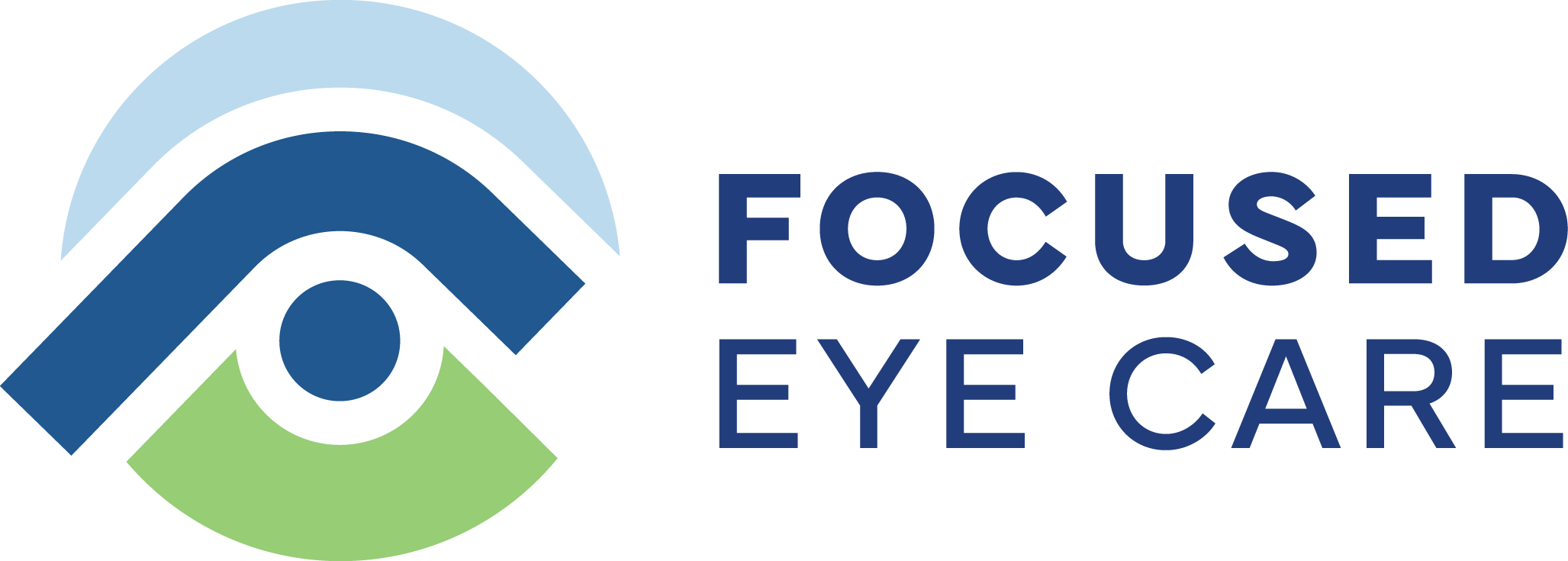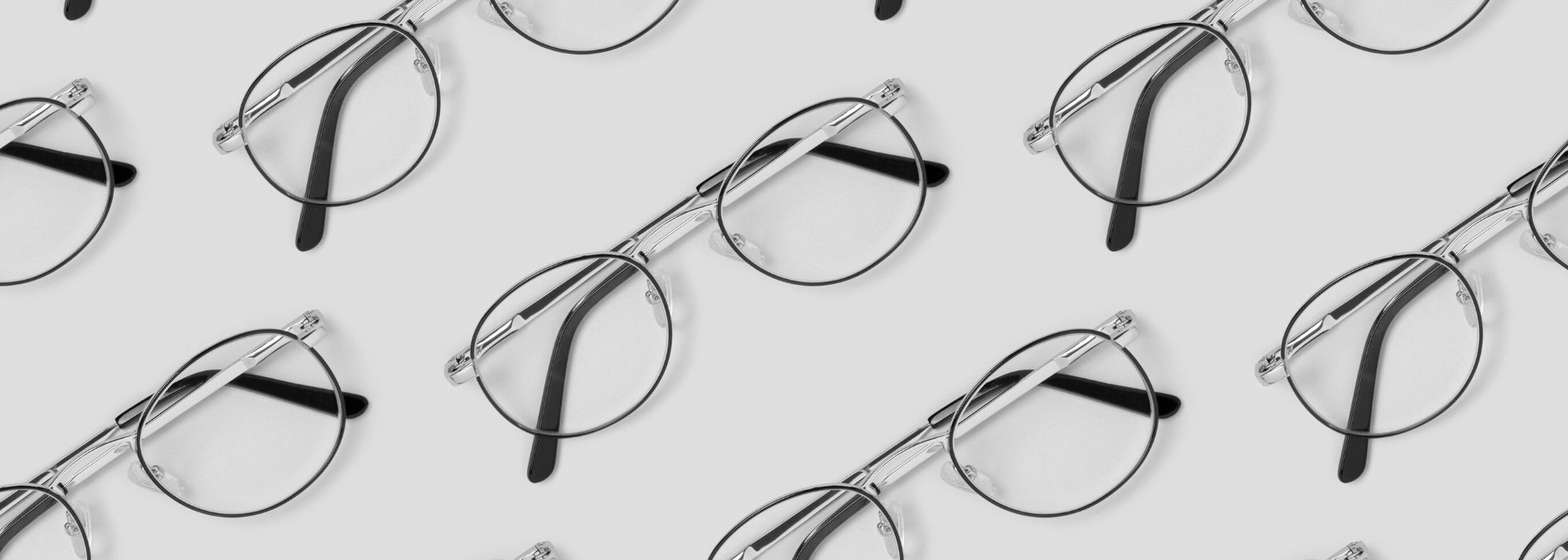Nashua Office: 603-882-0311 Milford Office: 603-673-1330 Call or Text
Schedule Your Eye Exam
Healthy eyes help make a healthy person, and regular eye exams should be a part of your healthy lifestyle. Your Focused Eye Care optometrist can not just correct your vision – he or she can also tell a lot about your general health by looking into your eyes.
The need for and frequency of vision examinations vary with age, race, medical history, family history, occupation and other factors. Individuals with problem indicators or symptoms require regular examination. In addition, the presence of certain risk factors may necessitate more frequent evaluations based on professional judgment.
Please be aware that many tests performed during a comprehensive eye exam are considered routine, and usually covered by your vision insurance.
Other tests may be considered medical in nature, or we may discover conditions during your routine exam that are medical in nature. We are obligated to discuss those conditions with you, and treatment options, but those services may not be covered by your vision insurance. (They may be covered by your health insurance.) Questions you may have about routine vs. medical services are answered in a free brochure available in our offices: Is Your Eye Exam Routine, or Medical? Ask for a copy.
Here are some short descriptions of the various tests that your Focused Eye Care doctor may perform during your comprehensive eye exam.
Visual Acuity Tests
Among the first tests performed in a comprehensive eye exam are visual acuity tests that measure the sharpness of your vision. It’s that eye chart thing you know all about.
These usually are performed using a projected eye chart to measure your distance visual acuity and a small, hand-held acuity chart to measure your near vision.
Color Blindness Test
A screening test that checks your color vision, to rule out color blindness. In addition to detecting hereditary color vision deficiencies, color blind tests also can alert your Focused Eye Care doctor to possible eye health problems affecting your color vision.
Cover Test
The cover test is the simplest and most common way to discover if your eyes are working together to focus. You will look at a small object across the room, with each of your eyes covered alternately. The test is then repeated with you looking at a near object.
Your Focused Eye Care doctor will assess whether the uncovered eye must move to pick up the target, which could indicate strabismus or a more subtle binocular vision problem that could cause eye strain or amblyopia (“lazy eye”).
Ocular Motility (Eye Movements)
Problems with eye movements can cause eye strain and may affect reading ability, sports vision and other skills, so these tests determines how well your eyes can follow a moving object and/or quickly move between and accurately fix on two separate targets.
Testing of smooth eye movements (“pursuits”) is more common. You will hold your head still and follow the slow movement of a hand-held light or other target with just your eyes. If quick eye movements (“saccades”) also are tested, you will move your eyes back and forth between two targets positioned some distance apart from each other.
Depth Perception (Stereopsis) Test
Stereopsis is the term used to describe how your eyes team up to perceive the 3-dimensional nature of objects.
There are many different types of depth perception tests, but a common one involves wearing a pair of 3-D glasses to look at a booklet of test patterns. Your task is to point out which of several circles in each pattern looks closer to you than the others. If you can correctly identify the “closer” circle in each pattern, your eyes are probably doing their depth perception best.
Retinoscopy
During this test, your Focused Eye Care doctor is able to estimate your eyeglasses or contact lens prescription, often right on the mark. This test is especially useful for children and patients who are unable to accurately answer the doctor’s questions.
The room lights will be dimmed, and you will focus on a large target (usually the big “E” on the eye chart). As you stare at the “E,” your doctor will shine a light at your eye and flip lenses in a machine – called a phoropter – in front of your eyes. This test estimates which lens powers will best correct your distance vision.
Refraction
This is the test that your Focused Eye Care doctor uses to determine your exact eyeglass prescription. It determines your level of hyperopia (farsightedness), myopia (nearsightedness), astigmatism and presbyopia (aging eyes).
During a refraction, your doctor puts the phoropter in front of your eyes and shows you a series of lens choices. He or she then asks you which of the two lenses in each choice looks clearer. Based on your answers, your eye doctor will continue to fine-tune the lens power until reaching a final eyeglass prescription.
Autorefractors & Aberrometers
Your Focused Eye Care doctor also may use an autorefractor or aberrometer to automatically estimate your eyeglass prescription. With both devices, you rest your chin to stabilize your head while you look into the instrument at a pinpoint of light or a detailed image.
Autorefractors are very accurate, and are especially helpful for determining an eyeglass prescription for young children and other patients who may have trouble sitting still, paying attention, or providing feedback that your Focused Eye Care doctor needs to perform an accurate manual refraction.
Aberrometers use advanced wavefront technology to detect even obscure vision errors, based on the way light travels through your eye. Aberrometers are primarily used for custom or wavefront LASIK vision correction procedures, but your Focused Eye Care doctor may use an aberrometer in your routine eye exam, as well.
Slit Lamp Exam
The slit lamp lets your Focused Eye Care doctor see the structures of your eyes up close – a binocular microscope that he or she uses to examine the structures of your eye under high magnification. A wide range of eye conditions and diseases can be detected during a slit lamp exam, including cataracts, macular degeneration, corneal ulcers and diabetic retinopathy.
During the slit lamp exam, you place your forehead and chin securely against the rests on the front of the instrument, and your doctor begins by examining the structures of the front of your eyes — including your eyelids, cornea, conjunctiva, iris, and lens. With the help of a hand-held lens, your doctor may also examine structures located farther back in your eye, such as your retina and optic nerve.
Glaucoma Tests
You typically have no warning signs of glaucoma until you already have significant vision loss. For this reason, routine eye exams that include tonometry are essential to rule out early signs of glaucoma and protect your eyesight.
A common glaucoma test is the “puff-of-air” test, technically known as non-contact tonometry, or NCT. A tonometer measures the pressure in your eyes to help determine whether you have glaucoma. If you have high eye pressure, you may be at risk for or have glaucoma.
For glaucoma testing, we usually use an ICare tonometer placed gently on your eye, but your Focused Eye Care doctor or a trained assistant may use the tonometer that puffs a small burst of air at your open eye. The procedure is completely painless with either method.
Another type of glaucoma test is performed with an instrument called an applanation tonometer. The most common of several versions of this instrument is mounted on the slit lamp. Like NCT, applanation tonometry takes just a few seconds, and is painless – the most you may feel is the tonometer probe tickling your eyelashes.
For this test, your eye doctor will put yellow drops in your eyes that numb them, and the yellow dye glows under blue light. You stare straight ahead into the slit lamp while your doctor gently touches the surface of your eye with the tonometer to measure your intraocular pressure (IOP).
Pupil Dilation
To get a better view of the internal structures of your eyes, your Focused Eye Care doctor uses dilating drops to enlarge your pupils, which usually require about 20 to 30 minutes to take full effect.
When your pupils are dilated, you will be sensitive to light (because more light is getting into your eye) and you may notice difficulty focusing on objects up close. These effects can last for up to several hours, depending on the strength of the drop used.
You should bring sunglasses with you to your eye exam, to minimize glare and light sensitivity on the way home. If you forget to bring sunglasses, we will give you a disposable pair.
Once the drops have taken effect, your eye doctor will use various instruments to look inside your eyes. Pupil dilation is very important, because it allows for very thorough evaluation of the inside of your eyes. (See information about Optos® scanning in our Specialized Exams & Treatments section)
Visual Field Test
Your Focused Eye Care doctor may check for the possible presence of blind spots in your peripheral vision, which can originate from eye diseases such as glaucoma, by performing a visual field test.
A simple visual field test involves your doctor or a trained assistant holding up different numbers of fingers within your peripheral field of view and asking how many can be seen while you continue to fixate on the doctor’s or assistant’s eyes.
If an eye disease is suspected, you may need to undergo more comprehensive, formal types of visual field testing. Analysis of blind spots also may help identify specific areas of brain damage caused by a stroke or tumor.
Other Eye Tests
In addition to the common tests performed during a standard comprehensive eye exam, your Focused Eye Care doctor may recommend other, more specialized eye tests. Often, such tests are performed by other eye doctors, such as retinal specialists, on a referral basis.
About Contact Lens Fittings
A contact lens fitting is an additional part of a comprehensive eye exam for every contact lens wearer. Your Focused Eye Care doctor will verify that your eyes are still healthy enough to wear contacts, that the contacts are fitting you correctly, measure your vision with your contact lenses on, and adjust your prescription as needed.
Questions you may have about contact lens evaluation and fitting are answered in a free brochure available in our offices: Your Annual Contact Lens Evaluation. Ask for a copy.
The eye care professionals at Focused Eye Care diagnose vision and eye health problems, and may even uncover other health conditions you were not aware of. For more information, request an appointment with a Focused Eye Care doctor.

